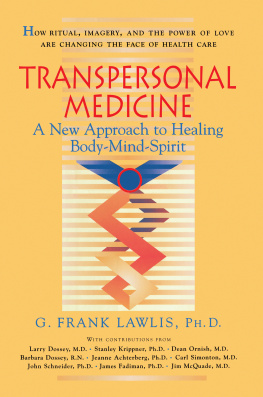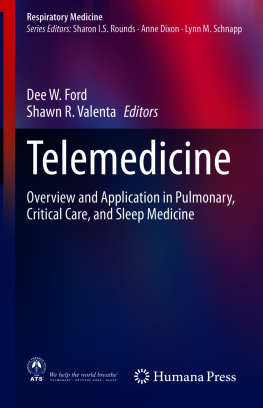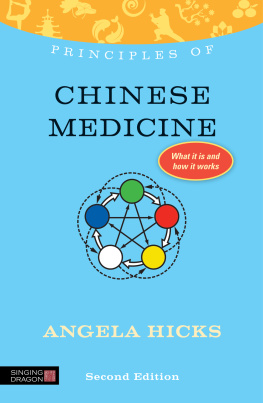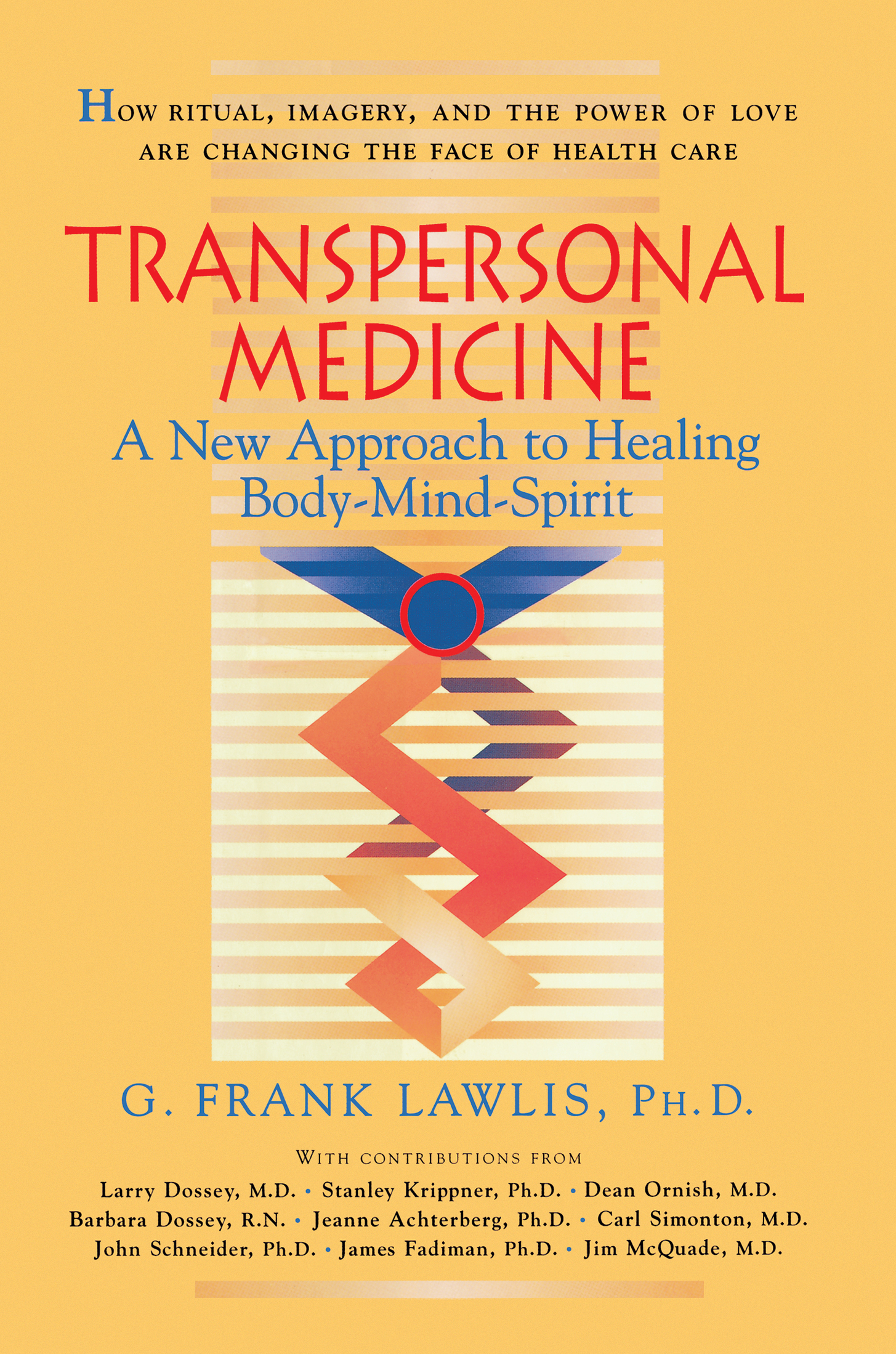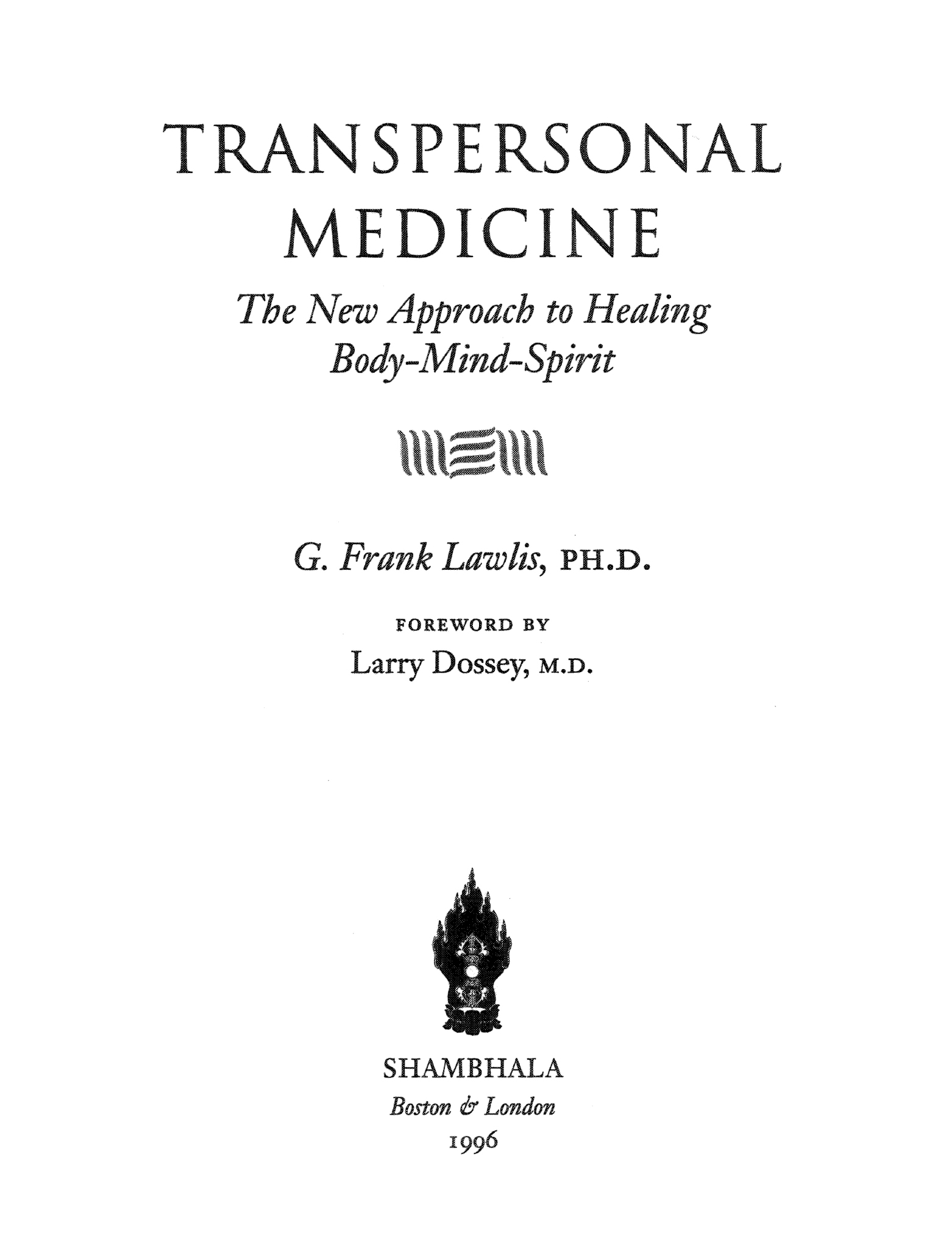FOREWORD
C ONFIDENCE IS RUNNING HIGH in medicine these days. We hear that were homing in on the ultimate determinants of disease, including the genes themselves. As we penetrate our DNA we will learn how to rearrange it, and soon all the maladies of humankind will be on the run. As a fan of scientific medicine, I applaud these developments. But an increasing number of people within the profession, myself included, believe that a continued physical approach to human health is unlikely to issue in utopia. The main reason is that something has been left out, something that counts as a first principle: mind or consciousness.
Dr. Frank Lawliss book is about this missing factor. Lawlis has explored this area for three decades and is well qualified to speak about it. This in itself is nothing new; other veterans have also written books on the role of the mind in health. But Lawliss book is different because of the multifaceted ways in which he approaches the mind. The result is an infinitely richer and scientifically more accurate picture of the role of consciousness in health.
Currently, most medical researchers insist that consciousness is only a byproduct of the chemistry, anatomy, and physiology of the brain (never mind how this happens; the experts dont know). As one authority in the field of artificial intelligence put it, the brain is simply a computer made of meat. This materialistic point of view has a deadening effect on the belief that there is anything higher than the physical brain and body. If the experts are rightif consciousness is all physicalthe transpersonal, spiritual dimension is an illusion.
Why speak, then, of a transpersonal domain and of a transpersonal medicine that go beyond the person? The reason comes, surprisingly, from science itself. Today hundreds of scientific studies strongly suggest that, to put it simply, consciousness can do things that brains cannot do. This means that the mind must be, in some sense, more than the brain and body. Experiments suggest, for example, that consciousness can act nonlocally, at a distance, without mediation by any detectable form of energy. These studies show that the effects of consciousness do not get weaker with distance, and that they cannot be shielded or blocked by any known physical barrier. The evidence indicates that nonlocal mental influences are not caused in any conventional sense. Summing up this body of knowledge, physicist Nick Herbert, an expert in the field of nonlocality, attributes three distinguishing qualities to nonlocal events. They are unmediated, unmitigated, and immediate. As a result of these findings we are confronted with a radically new view of the mindmind as nonlocalmind not localized to points in space, such as brains or bodies, or to points in time, such as the present moment.
A key realization is that nonlocal does not mean very large, a long way off, or a very long time. Nonlocality implies infinitude in space and time. Therefore, if some aspect of the mind is genuinely nonlocal, it is omnipresent and immortalcharacteristics of what Westerners have loosely called the soul, perhaps what Buddhists call Buddha nature. Nonlocal qualities also imply an indwelling divine aspect of humans, because we have always associated omnipresence and immortality with the Absolute. The spiritual implications of the nonlocal view are profound and are explored by Frank Lawlis in this book.
Several categories of transpersonal mental phenomena have far-reaching implications for health and healing. These include transpersonal imagery, distant or intercessory prayer, intuitive or distant diagnosis, telesomatic events in which distant individuals share physical symptoms, and many other types of events explored in these pages. These examples may seem disparate and unrelated, but they have at least one feature in common: love. Empathy, compassion, and deep caring appear to catalyze distant, nonlocal events between human beings.
We need to be attentive to how the field of transpersonal medicine is languaged. We should be especially careful in how we communicate these concepts to colleagues and skeptics, who may not have a feel for them or who may actually be hostile. An important point to bear in mind is that transpersonal and nonlocal are not identical and interchangeable terms. Importantly, if an event can be explained in terms of everyday sensory stimulienergetic exchanges in the see-touch-feel worldit is not a nonlocal occurrence. If a transpersonal event is described as nonlocal, it must behave like a nonlocal event. It must be unmediated by any known energetic signal, not subject to dissipation with increasing spatial separation, incapable of being shielded or blocked by physical barriers, and so on. Moreover, transpersonal events involve persons; nonlocal events can also occur between persons but between inanimate objects such as electrons and photons as well.
If this sounds like needless haggling over terms, one has only to look at certain disciplines within the field of alternative medicine to see why the vocabulary one chooses is critical. As two examples, the imprecise use of the term energy by practitioners of Therapeutic Touch has led to vicious criticism by skeptics. The use of subluxation in chiropractic has led to similar criticism. Postulating transpersonal phenomena will arouse enough ire; we do not need to add to it by slippages of language.
We should resist equating transpersonal and nonlocal with spiritual. Although transpersonal and nonlocal experiences are often associated with the feeling that there is something greater and something more, this is not always the case. There is nothing necessarily spiritual about any of these dimensions. Experiencing states of being that are beyond space and time may entail spiritual feelings but also sounds like passing out, as transpersonal psychologist Ken Wilber wryly states. Sudden and unanticipated immersion in these experiences is not always pleasant and rewarding. Thus it is said, The unwise drown in the sea in which the mystic swims. That is why personal psychological work should ideally precede or go hand in hand with transpersonal work.

